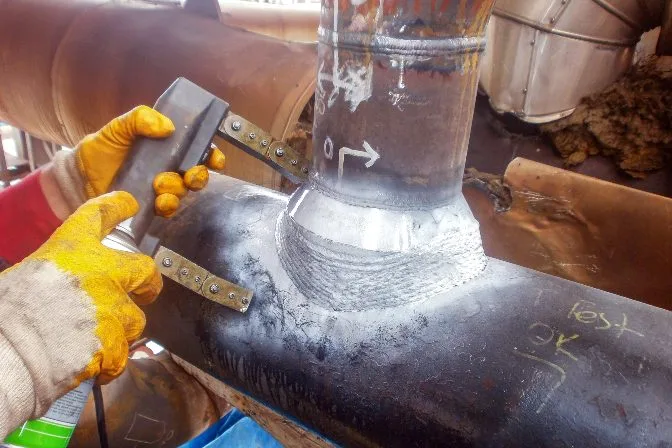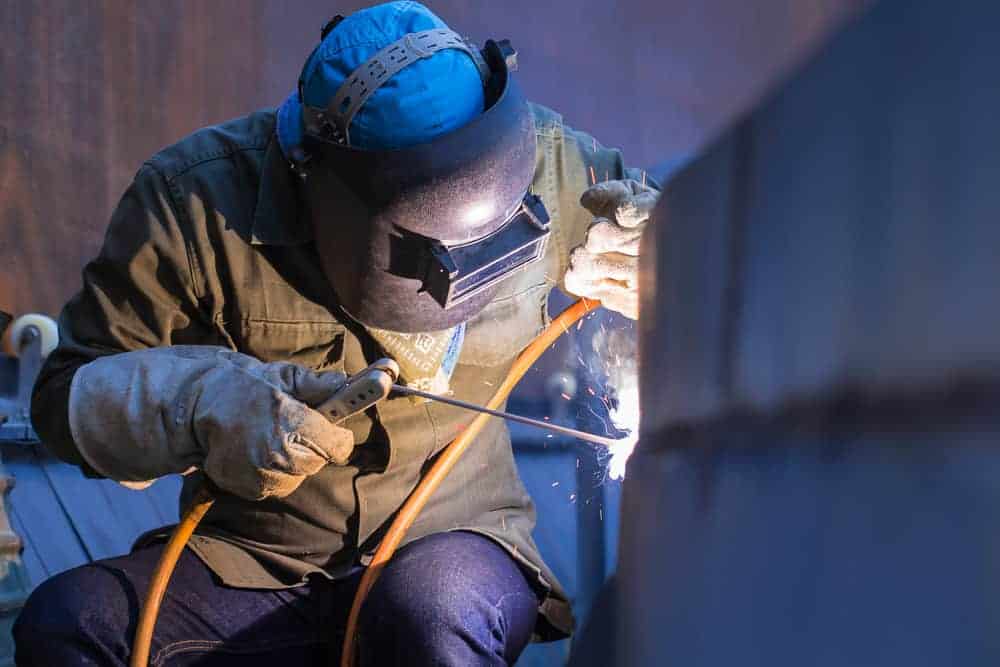Detailed Houston Welding Inspection for Improved Efficiency and Longevity
Detailed Houston Welding Inspection for Improved Efficiency and Longevity
Blog Article
A Comprehensive Overview to Recognizing Just How Welding Inspection Functions: Methods, Criteria, and Finest Practices for Top Quality Assurance in Steel Manufacture
Comprehending the complexities of welding inspection is crucial for preserving the honesty of steel manufacture. Various strategies, such as visual and ultrasonic screening, play a pivotal role in identifying potential defects, while adherence to established criteria makes certain compliance and durability. Applying ideal techniques can dramatically improve top quality assurance steps. However, the landscape of welding examination is not without its obstacles. What difficulties develop in the field, and how can these be successfully reduced? Checking out these facets reveals the depth of this crucial self-control.
Importance of Welding Assessment
Although welding is an essential procedure in various industries, its integrity directly influences the safety and security and efficiency of structures and parts. Effective welding inspection is important for recognizing issues that might compromise the quality and longevity of bonded joints. This process makes sure adherence to developed standards and requirements, which are important for maintaining structural stability and functional dependability.
Welding inspection offers several objectives, consisting of verifying that the welding process has been executed properly, analyzing the high quality of materials made use of, and confirming that the ended up item fulfills regulative and industry criteria (Houston Welding Inspection). Through extensive evaluation, possible concerns such as porosity, cracks, and incomplete fusion can be discovered early, stopping expensive repair work and mitigating safety threats
Additionally, constant welding examinations foster self-confidence amongst stakeholders, including designers, clients, and regulatory bodies, by demonstrating a dedication to top quality guarantee. The value of welding examination can not be overstated; it is integral not just for conformity with legal demands but also for enhancing the overall performance of welded structures. Inevitably, a robust welding examination program is a proactive step that safeguards against failings, making certain the long life and reliability of welded components in their desired applications.
Typical Welding Evaluation Strategies

Visual assessment is the first line of protection, allowing examiners to determine surface area flaws such as cracks, undercuts, or insufficient fusion. Radiographic screening utilizes X-rays or gamma rays to reveal interior problems, making it excellent for complicated welds. Ultrasonic screening uses high-frequency acoustic waves to spot subsurface issues, supplying specific measurements of weld integrity.
Magnetic particle screening is efficient for ferromagnetic products, highlighting surface area and near-surface stoppages when bits are used to an electromagnetic field. On the other hand, color penetrant screening uses a liquid color to expose surface-breaking defects, making sure that even the tiniest imperfections are identified.
Each strategy has its toughness and restrictions, commonly demanding a mix of techniques for thorough evaluation - Houston Welding Inspection. By applying these examination strategies, quality guarantee in steel manufacture is accomplished, making sure that welded structures fulfill safety and security and efficiency requirements
Market Criteria for Welding


The American Welding Society (AWS) and the American National Requirement Institute (ANSI) are two dig this noticeable organizations that develop welding criteria. AWS D1.1, for example, lays out the demands for welding steel structures, while AWS D1.2 concentrates on aluminum. Globally, the ISO 3834 common addresses quality requirements for blend welding, providing a framework suitable throughout nationwide borders.

Ideal Practices for High Quality Guarantee
Quality control in welding is vital to achieving durable and safe constructions. Implementing best practices makes certain that every weld fulfills the required criteria and specifications. First, establishing a detailed quality administration system (QMS) customized to the details welding job is vital. This QMS should specify duties, functions, and procedures to alleviate risks and enhance liability.
Normal training and accreditation of welding employees are crucial for preserving a knowledgeable workforce. Continual education and learning on the most recent welding methods and innovations ensures that assessors and welders are educated concerning current requirements and practices.
Additionally, performing pre-weld inspections to evaluate products and equipment can prevent defects prior to they occur. Houston Welding Inspection. Throughout the welding procedure, real-time tracking and paperwork look at these guys of welding specifications help recognize disparities promptly. Post-weld evaluations should entail extensive examinations using non-destructive screening (NDT) techniques to ensure the honesty of the welds
Moreover, maintaining clear interaction amongst staff member promotes a society of quality. Regular audits and reviews of the welding process help determine areas for improvement. By sticking to these finest practices, organizations can accomplish optimum quality control, eventually causing enhanced safety and security and performance in metal fabrication tasks.
Challenges in Welding Evaluation
Although welding inspection is crucial for guaranteeing architectural integrity, it offers a selection of obstacles that can complicate the evaluation process. One considerable difficulty is the irregularity in welding methods and products used, which can impact the uniformity of weld quality. Different welders might employ differing approaches, causing inconsistencies that inspectors demand to identify and review.
An additional difficulty includes the discovery of defects. Non-destructive screening (NDT) methods, such as ultrasonic and radiographic screening, can be intricate and call for knowledgeable specialists site to analyze results accurately. False positives or downsides can take place, potentially causing pricey rework or endangered security.
In addition, the existence of ecological variables, such as temperature and moisture, can affect the honesty of welds and the efficiency of examination strategies. Examiners have to additionally browse the governing landscape, making certain compliance with industry requirements, which can differ by territory and application.
Conclusion
In conclusion, welding evaluation plays a crucial function in making certain the honesty and security of metal manufacture. Employing a variety of evaluation techniques, sticking to well-known industry requirements, and applying effective quality management methods jointly improve the dependability of bonded structures. In spite of the challenges faced in the inspection process, a commitment to continuous renovation and adherence to ideal methods can substantially bolster the quality assurance structure, promoting better self-confidence amongst stakeholders in the welding industry.
Reliable welding assessment is crucial for determining problems that could endanger the high quality and toughness of bonded joints.Furthermore, consistent welding inspections foster self-confidence among stakeholders, consisting of designers, clients, and regulative bodies, by showing a dedication to high quality assurance.The American Welding Society (AWS) and the American National Requirement Institute (ANSI) are 2 popular organizations that develop welding standards. Throughout the welding process, real-time surveillance and documents of welding specifications aid determine inconsistencies instantly. Despite the difficulties faced in the inspection process, a dedication to constant improvement and adherence to finest methods can dramatically strengthen the high quality assurance framework, cultivating greater self-confidence among stakeholders in the welding market.
Report this page